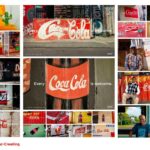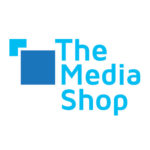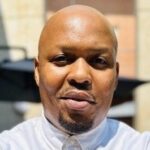Arisha Saroop, Business Unit Manager The MediaShop Durban
At our recent Media Landscape session entitled ‘Content that Works’ which delved into brands creating more engaging and relevant content from most of what consumers are subjected to daily, a particular example of a how a brand proudly stood up for representation made me sit up and reaffirm some brand affinities held close to my chest.
Coca Cola Brazil recently took the homophobic idiom ‘Essa Coca e Fanta’ which literally translates to ‘That Coke is a Fanta’, and turned it into an empowering campaign, filling cans of Coke with Fanta Orange. It was relevant, engaging, inclusive and purely organic – and it delivered one billion media impressions with zero media spend, turning one hurtful slur into a slogan of Pride.
Brave right? With so many conservative groups lobbying against the LGBTQ community only a big brand can be this brave; big enough to not injure their market share or upset their loyal conservative’s right?
Well no not really, with Gay Pride month just passed it seems that more and more brands, big and small, are jumping onto the Rainbow bandwagon to render support and connect with those that back the crusade. They’re doing so by creating themed campaigns and merchandise and donating proceeds from sales to LGBTQ associations. Global examples of brands such as Magnum, Nike, DKNY, Uber and Tiffany & Co demonstrate that brands from different genres can easily adapt to changing environments.
Even social media platforms are becoming more inclusive. Instagram has added new rings for users that use a Pride hashtag in their stories, Facebook has Pride themed rainbow frames and filters and Snapchat tasked creators to design Pride themed landmarks like the Flatiron building in New York.
Brands are seeing the impact of embracing this revolution as they grow loyalty and increase return of investment by reaching out to one of the fasting growing markets that has a global buying power of almost $1 Trillion.
 In October 2017, a LGBTQ Ad Format Effectiveness study was released completed in conjunction with Nielsen and a social media company that surveyed 800 LGBTQ participants. The study basically reconnoitred the efficacy of themed advertising to this market by comparing the effectiveness of inclusive marketing campaigns vs generic advertising from the same brands.
In October 2017, a LGBTQ Ad Format Effectiveness study was released completed in conjunction with Nielsen and a social media company that surveyed 800 LGBTQ participants. The study basically reconnoitred the efficacy of themed advertising to this market by comparing the effectiveness of inclusive marketing campaigns vs generic advertising from the same brands.
Granted this study was executed off a small sample, but the learnings are massive. Two crucial fundamentals are evident as tweeted by the co-founder and president of Hornet.com: “Buyer intent was 40% higher and willingness to recommend was 66% higher”.
Globally we are seeing a change in advertising, and back home brands are slowly gearing themselves up for the LGBTQ market. Examples include the Unheard Voices radio and digital campaign (2018), Chicken Licken’s “Dad I am …” (2019) and the very extra Harold courtesy of Netflorist.
Unfortunately fear, ignorance and stigma are still the main contributors to brands not being fully inclusive, but in a country as diverse as ours, representation of our rainbow nation should come easy…right?
Here’s a brand challenge for our marketers – be brave, be inclusive, be representative – fortune favours It.
- MRF Unveils Latest MAPS® Data - 20th February 2025
- The BRC announces changes to the board and updates for 2025 - 17th December 2024
- Top 50 DSTV TV programmes – October 2024 - 12th November 2024




